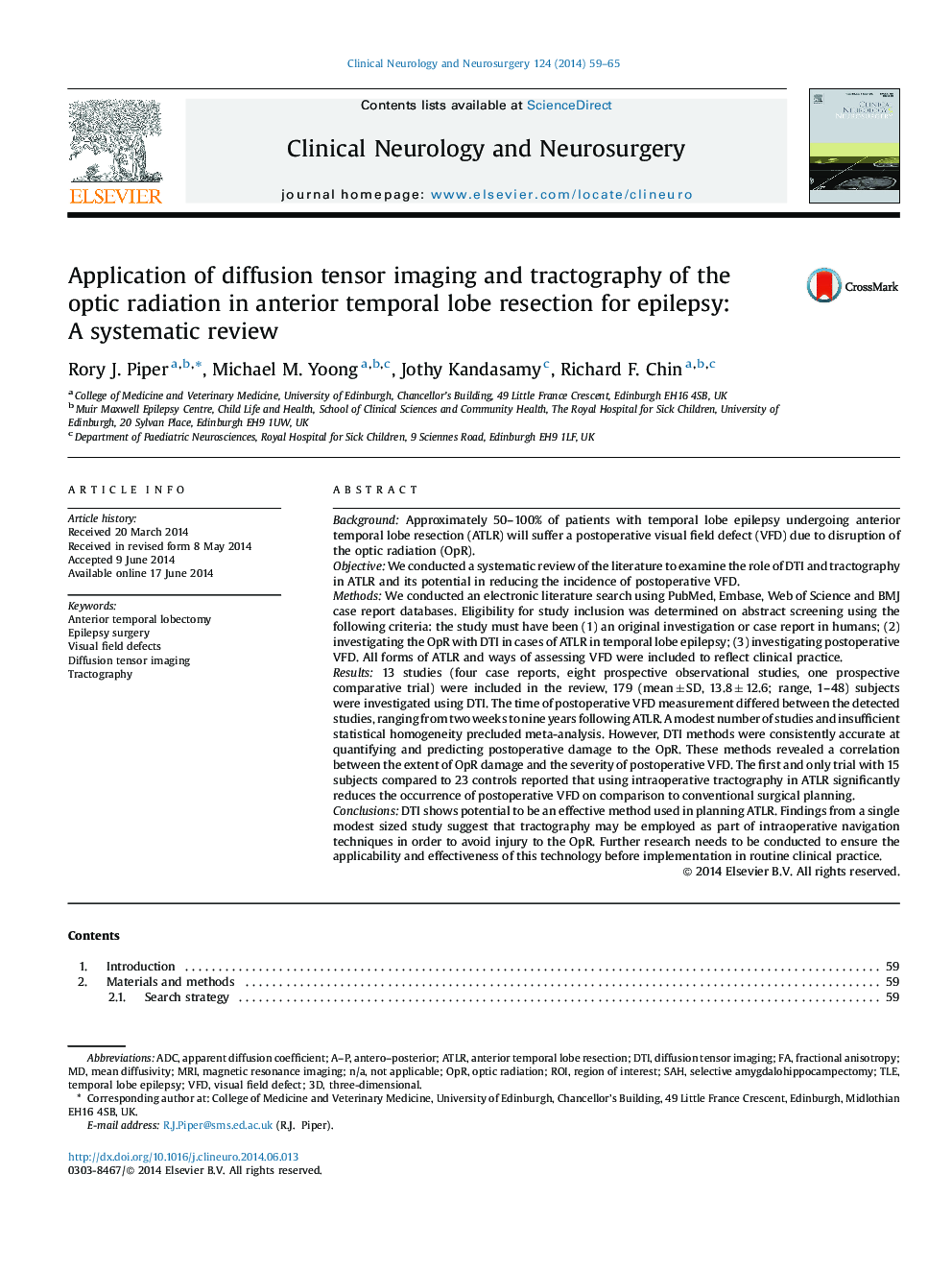| Article ID | Journal | Published Year | Pages | File Type |
|---|---|---|---|---|
| 3040084 | Clinical Neurology and Neurosurgery | 2014 | 7 Pages |
•DTI methods show potential to be useful in planning ATLR and reducing postoperative VFD.•13 studies were found to use DTI to investigate the OpR damage and VFD relationship.•One trial tested the additional effect of using DTI guidance vs. conventional MRI.•Further evidence is required to decide whether DTI guidance can help to reduce VFD.
BackgroundApproximately 50–100% of patients with temporal lobe epilepsy undergoing anterior temporal lobe resection (ATLR) will suffer a postoperative visual field defect (VFD) due to disruption of the optic radiation (OpR).ObjectiveWe conducted a systematic review of the literature to examine the role of DTI and tractography in ATLR and its potential in reducing the incidence of postoperative VFD.MethodsWe conducted an electronic literature search using PubMed, Embase, Web of Science and BMJ case report databases. Eligibility for study inclusion was determined on abstract screening using the following criteria: the study must have been (1) an original investigation or case report in humans; (2) investigating the OpR with DTI in cases of ATLR in temporal lobe epilepsy; (3) investigating postoperative VFD. All forms of ATLR and ways of assessing VFD were included to reflect clinical practice.Results13 studies (four case reports, eight prospective observational studies, one prospective comparative trial) were included in the review, 179 (mean ± SD, 13.8 ± 12.6; range, 1–48) subjects were investigated using DTI. The time of postoperative VFD measurement differed between the detected studies, ranging from two weeks to nine years following ATLR. A modest number of studies and insufficient statistical homogeneity precluded meta-analysis. However, DTI methods were consistently accurate at quantifying and predicting postoperative damage to the OpR. These methods revealed a correlation between the extent of OpR damage and the severity of postoperative VFD. The first and only trial with 15 subjects compared to 23 controls reported that using intraoperative tractography in ATLR significantly reduces the occurrence of postoperative VFD on comparison to conventional surgical planning.ConclusionsDTI shows potential to be an effective method used in planning ATLR. Findings from a single modest sized study suggest that tractography may be employed as part of intraoperative navigation techniques in order to avoid injury to the OpR. Further research needs to be conducted to ensure the applicability and effectiveness of this technology before implementation in routine clinical practice.
